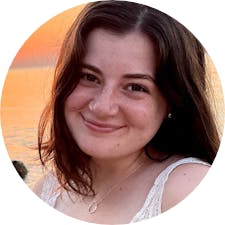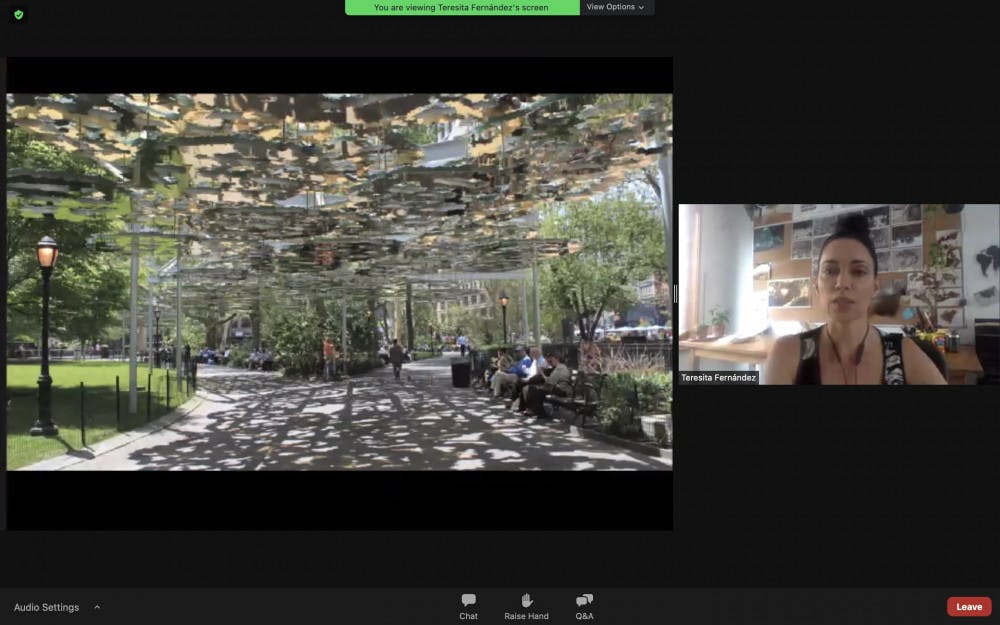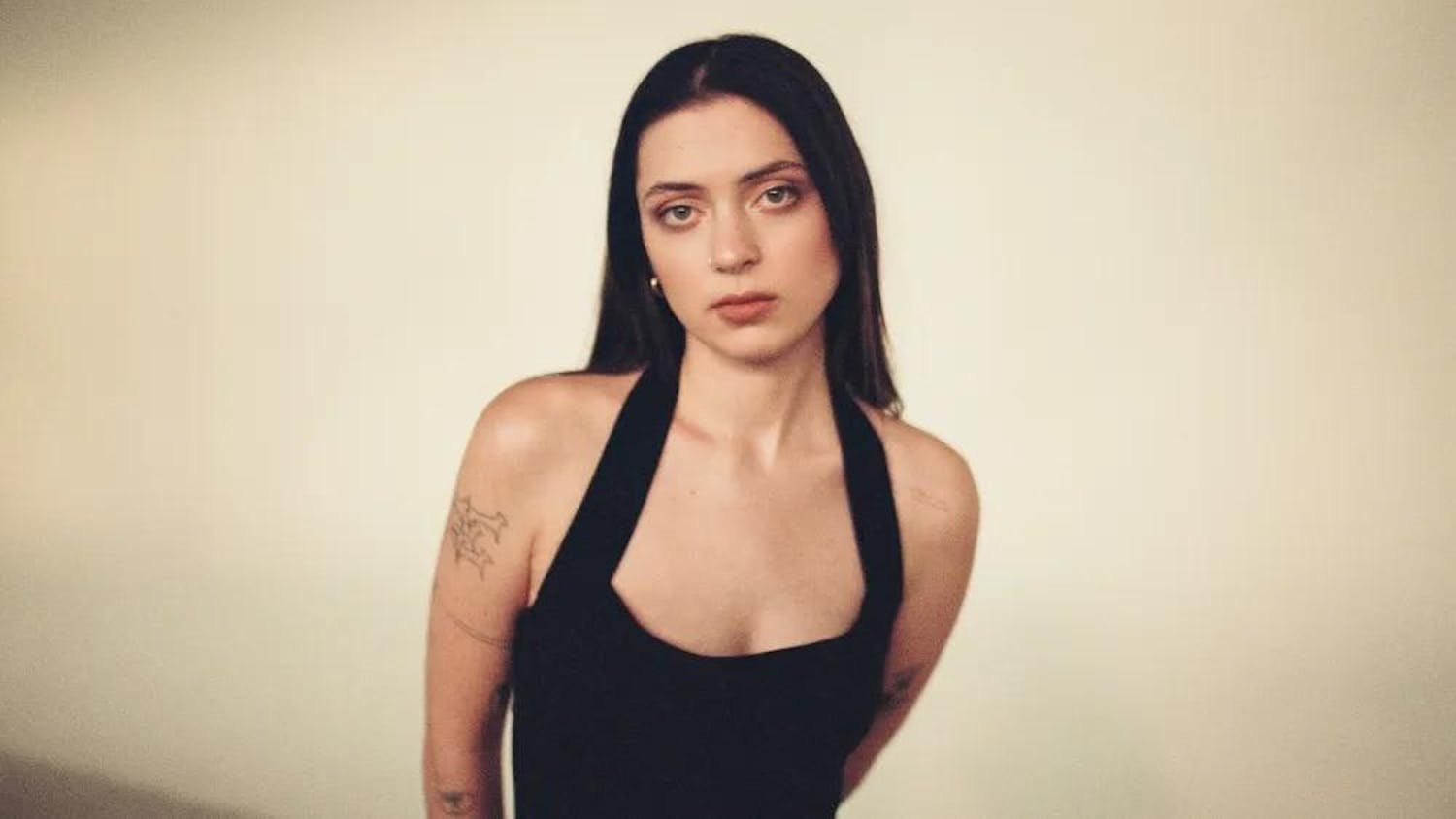Visual artist Teresita Fernández visited campus virtually Wednesday evening as part of the Virtual Artist Talk Series organized by theDepartment of Visual Arts. Fernández is known for her work reimaging the idea of landscapes, a theme that often holds deep historical and cultural references.
The talk began with an introduction by Heather Bhandari ’97, adjunct lecturer in the Department of Visual Arts and program director of the Art World Conference. Bhandari noted Fernández’s achievements as a recipient of the Guggenheim Fellowship and the John D. and Catherine T. MacArthur Foundation Fellowship. Fernández was also appointed by President Obama to the U.S. Commission of Fine Arts, making her the first Latina to serve in that role, and her artwork has been exhibited nationally and internationally.
The artist started off by explaining her focus on the concept of landscapes. She uses the idea of “landscape” to have multifaceted conversations about places where an individual is “located spiritually, racially, socially, historically, psychologically, legally and environmentally” in relation to their surroundings, she said.
Fernández explores “how the sense of place is very often informed by history, (extensive) research and by drawing connections between all of the things that I am learning about,” she said.
She described some of her own works and how she integrates landscapes into them, such as her forty-foot long installation “Blind Blue Landscape” situated on a curved wall in Naoshima, Japan. The artwork is composed of tens of thousands of differently sized glass cubes on a wall which emulate a large mirror reflecting the landscape in front of it.
“It’s essentially bringing the landscape indoors but also distorting it and breaking it off and ... reflecting your own image superimposed onto the landscape so that each tiny cube becomes almost like a miniature landscape painting of the view behind you,” she said.
“Fata Morgana,” a piece temporarily located in Madison Square Park in New York City, consisted of 500 feet of golden, polished discs that created a canopy over the park’s Oval Lawn. She explained that this piece, the title of which is the Italian phrase for a mirage, worked as an optical illusion. The metal, a reference to mining, formed intricate patterns, similar to foliage, as it filtered sunlight at different hours throughout the day. Diverging from the traditional norms of a public art installation, Fernández aimed to create an immersive experience for pedestrians in the park.
She described how she pushed the bounds of artistic integration between the public, performers and sculptures. Fernández partnered with choreographer Stephen Petronio to create a performance incorporating dancers, music and passers-by to highlight themes of erasure and visibility. Titled “Luminous Mischief,” the performance enhanced the structural features of “Fata Morgana.”
Fernández’s other works include “Fire (United States of the Americas)” where she depicts the continental United States, Alaska, Hawaii and the U.S. territories through the use of charcoal and hand-drawn shadows. “It is a reference to slash-and-burn techniques (that Indigenous people used) to shape and cultivate the land for thousands of years,” Fernández said. She noted that this piece relates to ideas of nations, territories and borders while exploring the destructive history of the United States. The plural “Americas” in the titles is meant to serve as a keen reminder that the United States is only one part of the larger American continents.
At the end of the talk, Fernández answered questions and mentioned one of her current projects: an online interactive exhibit she produced around the start of the pandemic entitled “Maelstrom: A Visual Essay.”
“It’s a visual essay of my research and my work woven together and was an important outlet for me to contextualize some of my writing and some of my research,” she said. The exhibit “gives a good sense of the holistic aspect of my practice.”
Corrections: A previous version of this article's photo credit attributed the image to Claire Liu. In addition, the printed version of this article credited the image as courtesy of the visual arts department. In fact, Rebecca Carcieri captured the image. The Herald regrets the errors.

Rebecca Carcieri is an arts & culture editor. She is a senior from Warwick, Rhode Island studying political science.





